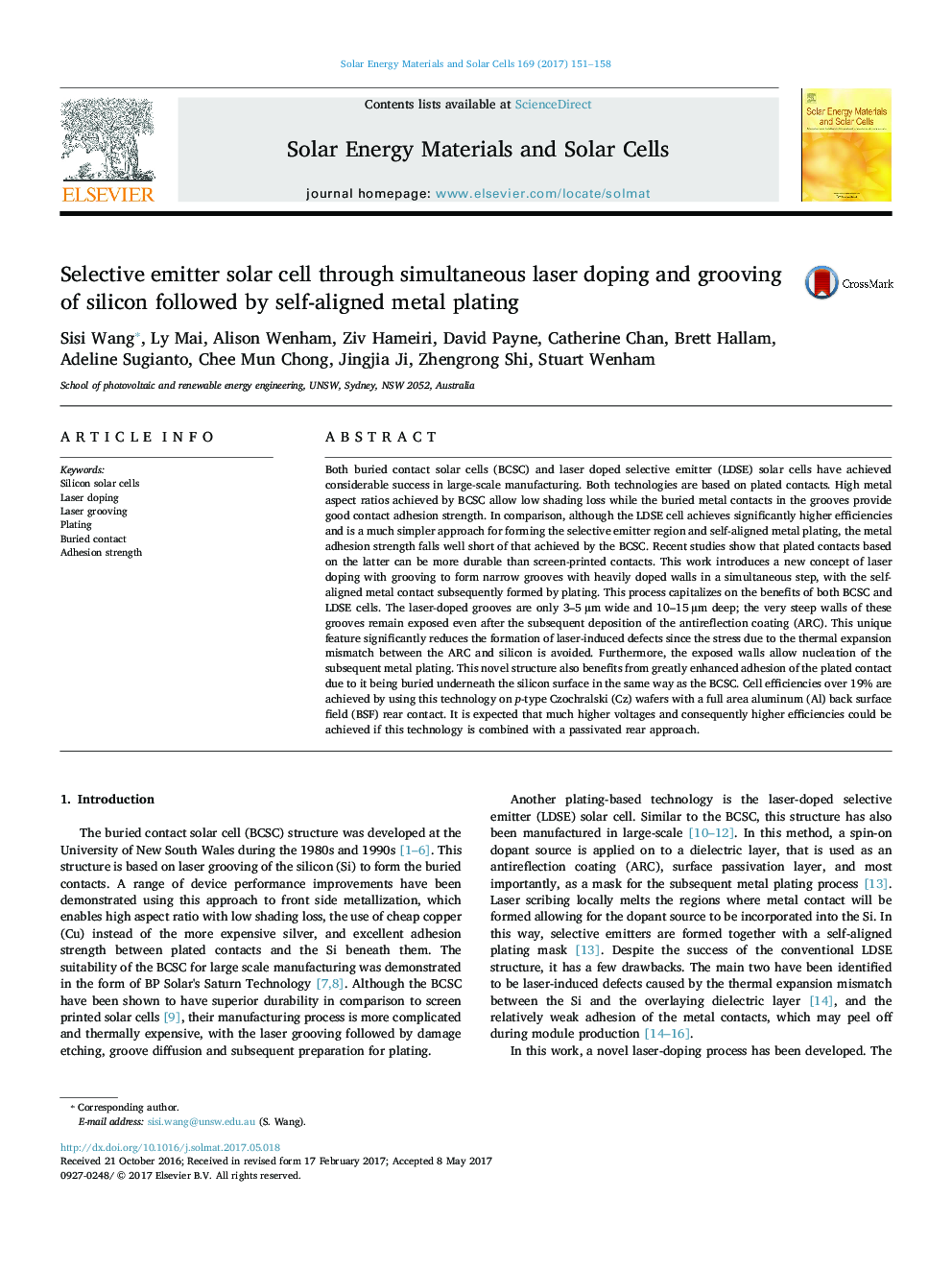| کد مقاله | کد نشریه | سال انتشار | مقاله انگلیسی | نسخه تمام متن |
|---|---|---|---|---|
| 4758749 | 1420654 | 2017 | 8 صفحه PDF | دانلود رایگان |
عنوان انگلیسی مقاله ISI
Selective emitter solar cell through simultaneous laser doping and grooving of silicon followed by self-aligned metal plating
ترجمه فارسی عنوان
سلول خورشیدی تابعی انتخابی از طریق دوپینگ لیزر همزمان و شمع سازی سیلیکون و پس از آن پوشش فلزی خود را تنظیم می کند
دانلود مقاله + سفارش ترجمه
دانلود مقاله ISI انگلیسی
رایگان برای ایرانیان
کلمات کلیدی
سلول های خورشیدی سیلیکون، دوپینگ لیزر، ماشینکاری لیزری، کاشی کاری، تماس با سرقت استحکام کشش،
موضوعات مرتبط
مهندسی و علوم پایه
مهندسی شیمی
کاتالیزور
چکیده انگلیسی
Both buried contact solar cells (BCSC) and laser doped selective emitter (LDSE) solar cells have achieved considerable success in large-scale manufacturing. Both technologies are based on plated contacts. High metal aspect ratios achieved by BCSC allow low shading loss while the buried metal contacts in the grooves provide good contact adhesion strength. In comparison, although the LDSE cell achieves significantly higher efficiencies and is a much simpler approach for forming the selective emitter region and self-aligned metal plating, the metal adhesion strength falls well short of that achieved by the BCSC. Recent studies show that plated contacts based on the latter can be more durable than screen-printed contacts. This work introduces a new concept of laser doping with grooving to form narrow grooves with heavily doped walls in a simultaneous step, with the self-aligned metal contact subsequently formed by plating. This process capitalizes on the benefits of both BCSC and LDSE cells. The laser-doped grooves are only 3-5 µm wide and 10-15 µm deep; the very steep walls of these grooves remain exposed even after the subsequent deposition of the antireflection coating (ARC). This unique feature significantly reduces the formation of laser-induced defects since the stress due to the thermal expansion mismatch between the ARC and silicon is avoided. Furthermore, the exposed walls allow nucleation of the subsequent metal plating. This novel structure also benefits from greatly enhanced adhesion of the plated contact due to it being buried underneath the silicon surface in the same way as the BCSC. Cell efficiencies over 19% are achieved by using this technology on p-type Czochralski (Cz) wafers with a full area aluminum (Al) back surface field (BSF) rear contact. It is expected that much higher voltages and consequently higher efficiencies could be achieved if this technology is combined with a passivated rear approach.
ناشر
Database: Elsevier - ScienceDirect (ساینس دایرکت)
Journal: Solar Energy Materials and Solar Cells - Volume 169, September 2017, Pages 151-158
Journal: Solar Energy Materials and Solar Cells - Volume 169, September 2017, Pages 151-158
نویسندگان
Sisi Wang, Ly Mai, Alison Wenham, Ziv Hameiri, David Payne, Catherine Chan, Brett Hallam, Adeline Sugianto, Chee Mun Chong, Jingjia Ji, Zhengrong Shi, Stuart Wenham,
